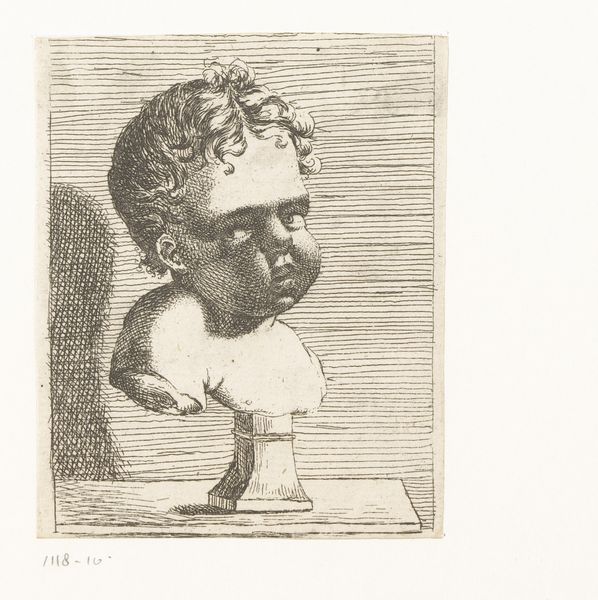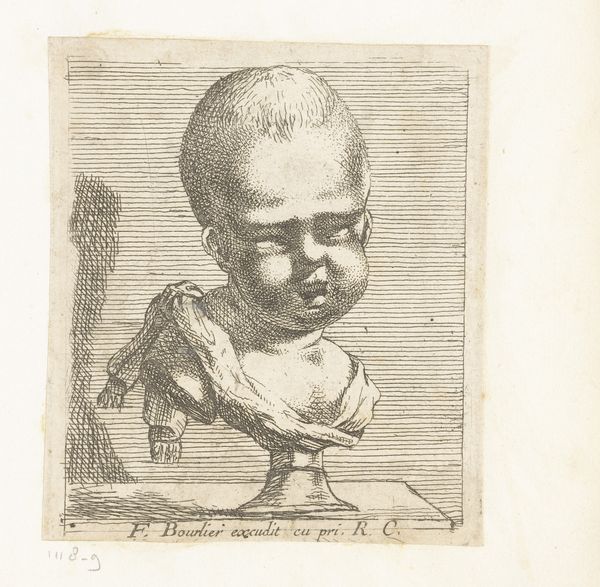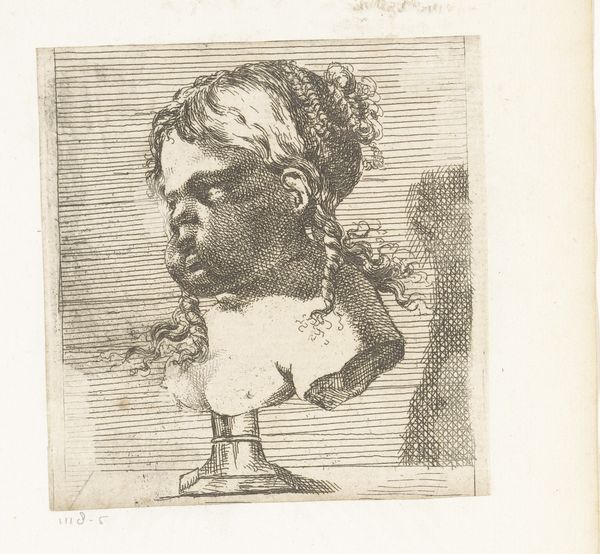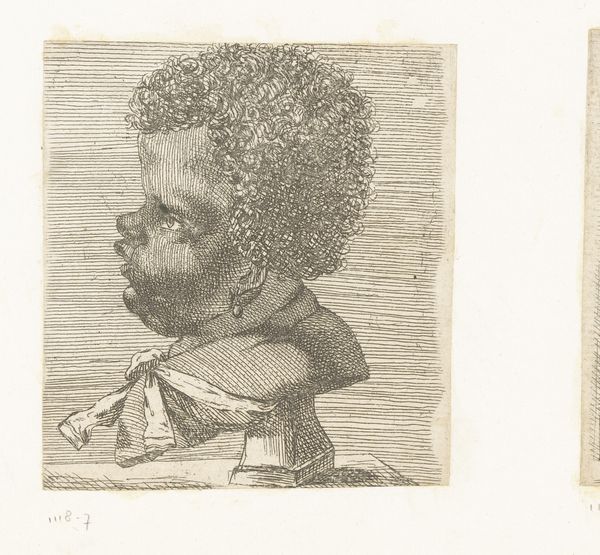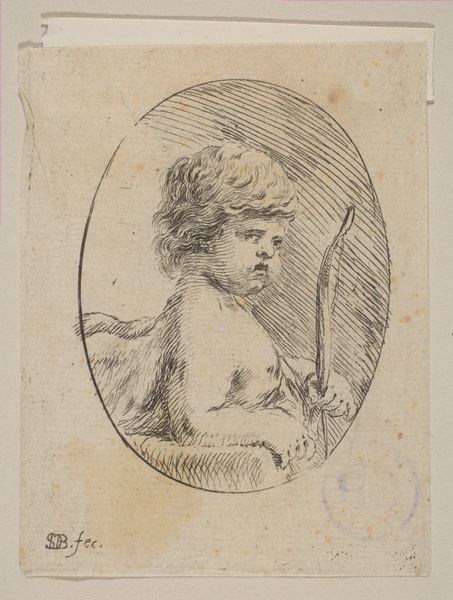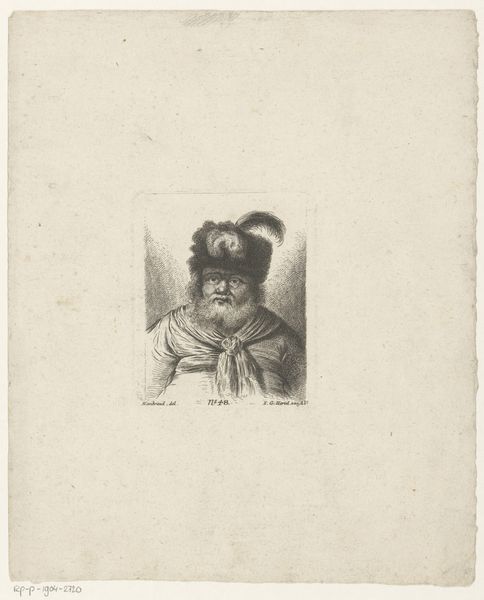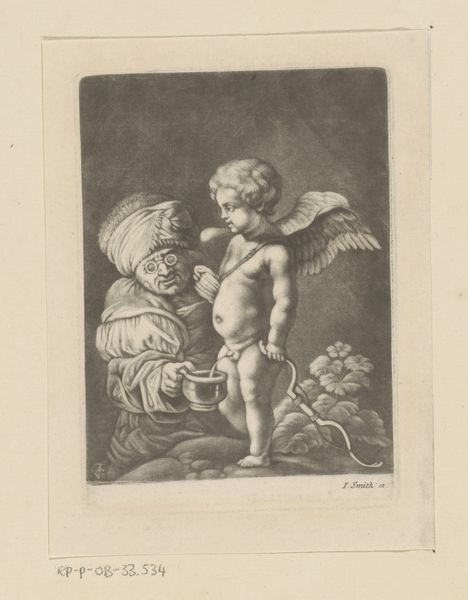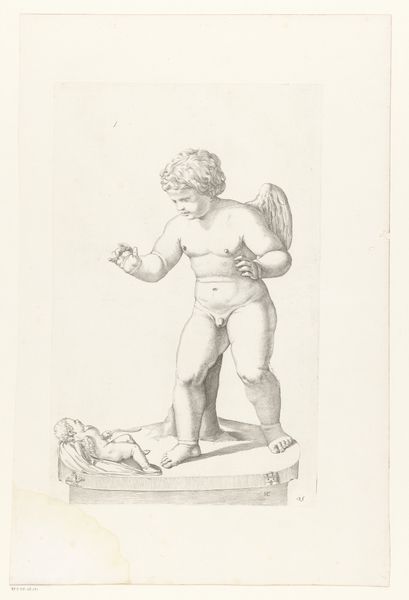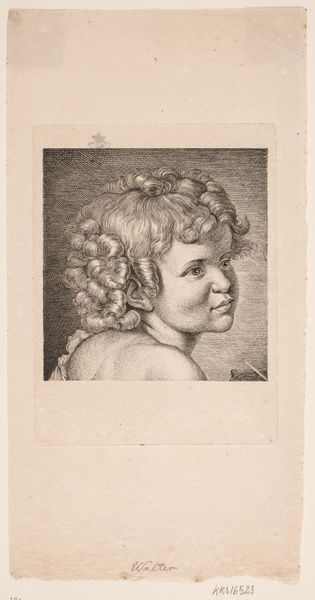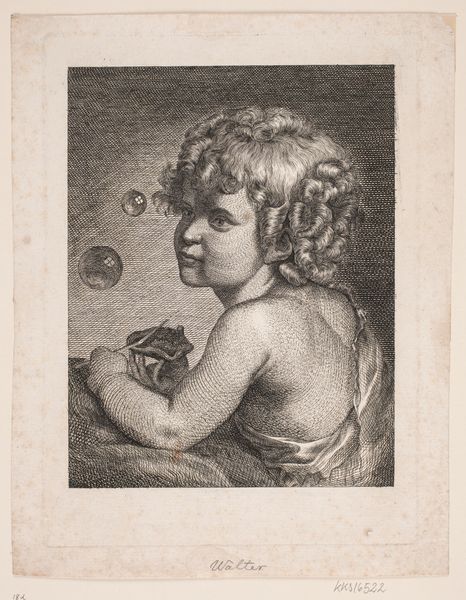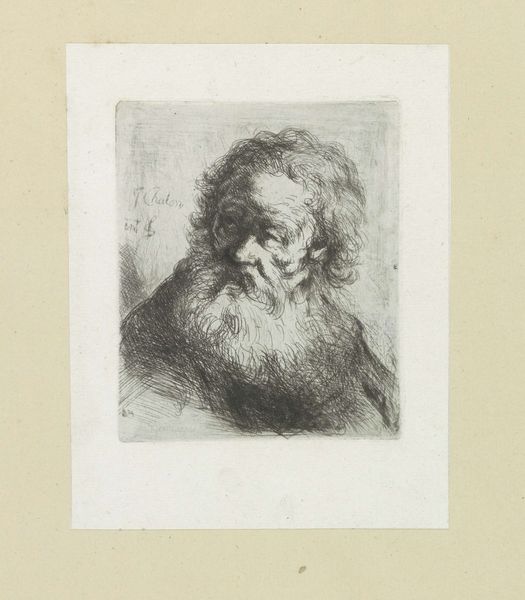
print, engraving
#
portrait
#
pencil drawn
#
baroque
# print
#
pencil sketch
#
old engraving style
#
child
#
pencil drawing
#
engraving
Dimensions: height 105 mm, width 88 mm
Copyright: Rijks Museum: Open Domain
Curator: Here we have "Herm met kinderkop met baret," or "Herm with a child's head wearing a beret," an engraving dating back to around 1660, by Franҫois Bourlier. Editor: What a delightful, strange little thing! It’s… charmingly grotesque? That beret, perched on that cherubic but somehow severely puffed face. I am instantly drawn in, repulsed, and strangely fond of it all at once. Curator: Indeed. Bourlier was working within the Baroque style, a period known for its dramatic, sometimes theatrical sensibilities. This engraving exemplifies how artists often explored themes of childhood, innocence, but also the inherent imperfections of the human form. Editor: I find it strangely contemporary. Like something you might see as an ironic meme. The contrast between the idealized bust and the decidedly un-idealized, almost caricatured, child's face is so jarring. It is as if a serious sculpture suddenly got a mischievous, bubble-cheeked inhabitant. Curator: It's interesting you mention memes because, in a way, printmaking during the Baroque period served a similar function: the mass dissemination of images to convey ideas, often political or social commentary. Prints were more affordable, enabling images and their associated ideologies to circulate widely amongst varied publics. Editor: I guess my immediate feeling speaks to the universality of art—that it triggers instant connections regardless of its historical framework or an artist's intentions. The roughness of the lines, for instance—you can almost feel the artist scratching away at the plate, trying to catch the fleeting expressions of a child. Curator: Absolutely. The technique underscores a tension between formal portraiture and an interest in momentary or unconventional physiognomy, blurring established social or aesthetic protocols. This engraving offers a peek into Baroque print culture but simultaneously opens itself to more modern, playful associations. Editor: So well said. As someone inclined to react first and think later, I will keep those words in mind next time, diving into my feelings for an art piece and understanding that I am participating in its cultural circulation too. Curator: Precisely! With artworks like Bourlier's "Herm with child's head wearing a beret," we not only revisit the past but discover it dynamically mirrored, often wittily, within our own moment.
Comments
No comments
Be the first to comment and join the conversation on the ultimate creative platform.
